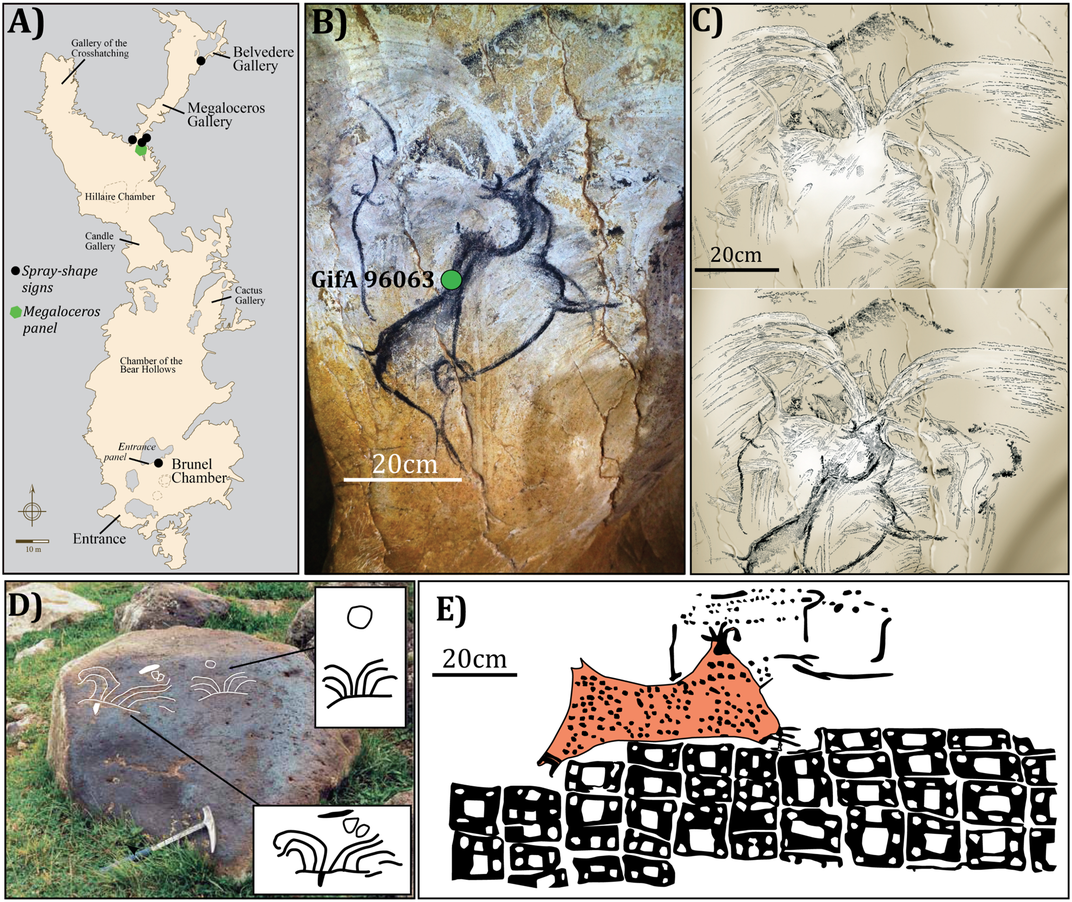Chauvet Cave Paintings Could Depict a 37,000-Year-Old Volcanic Eruption
Mysterious paintings in the “Cave of Forgotten Dreams” led researchers to new evidence of ancient volcanic activity
/https://tf-cmsv2-smithsonianmag-media.s3.amazonaws.com/filer/ec/fa/ecfaebdd-3319-4b0d-a53b-7a4ac4136359/42-46195297.jpg)
The Chauvet-Pont D'Arc cave is one of the most famous underground caverns in the world, housing one of the oldest and best-preserved collections of prehistoric cave paintings ever discovered. Now, researchers believe that some of the most mysterious, abstract designs found in the cave may be among the earliest paintings of volcanic eruptions.
While most of the drawings in the Chauvet cave depict animals like wooly rhinoceroses, bears, and cave lions, a few drawings deep within the interior have puzzled archaeologists since the cave was discovered in 1994. The red-and-white paintings appear to be shaped like something spraying out of a nozzle, and in some cases were covered up by later drawings, Ewen Callaway writes for Nature. But according to a new study published in the journal PLOS One, researchers believe the images could depict volcanic eruptions nearly 37,000 years ago.
“It is very likely that humans living in the Ardèche river area witnessed one or several eruptions,” the team led by Jean-Michel Geneste, writes in the study. “We propose that the spray-shape signs found in the Chauvet-Pont d’Arc cave could be the oldest known depiction of a volcanic eruption.”
Previously, the oldest-known recording of a volcanic eruption was a Neolithic mural discovered in the ruins of Çatalhöyük, an ancient city in southwestern Turkey. Researchers believe that painting shows a 7,500 BC eruption by Mount Hasan, an inactive volcano nearby the city. If the Chauvet cave paintings do depict volcanic eruptions, they would be by far the oldest yet discovered, Sanskrity Sinha reports for International Business Times.

The closest volcano to the Chauvet cave that was active around the time the paintings were made would have been about 22 miles northwest of the caverns, in the Bas-Viverais region, John Lichfield writes for The Independent. While volcanic eruptions can take many different forms, geologists believe that the Bas-Viverais range may had “strombolian” eruptions, which look similar to the firework-like spray depicted on Chauvet’s walls.
Even so, prior to this study, researchers had only discovered evidence for eruptions in the region that long predated the arrival of our ancient ancestors on the scene. So geoscientist Sebastien Nomade gathered rock samples from three of the region’s volcanoes. By measuring the levels of radioactive isotopes of argon gas, which is released during volcanic eruptions, Nomade and his team discovered that the Bas-Viverais range had experienced several dramatic eruptions between 19,000 and 43,000 years ago.
The area around the Chauvet cave was likely populated around this time and far enough away that any inhabitants would have been safe from the eruptions but still have a good view of the action, Callaway writes. “You just have to climb the small hill on top of Chauvet, and looking north you see the volcanoes. During the night you could see them glowing and you could hear the sound of the volcanic eruption,” Nomade tells Callaway.
Without being able to interview the artists themselves, researchers will never know for sure if the mysterious drawings were inspired by a nearby volcanic eruption. For now, though, it’s a promising idea, Oxford University archaeologist Michael Petraglia, who was not involved in the study, tells Callaway.
“I think they make a pretty good case that it’s potentially a depiction of the kind of volcano that one sees on the landscape,” Petraglia tells Callaway. “Maybe there’s more of this out there than we have realized.”